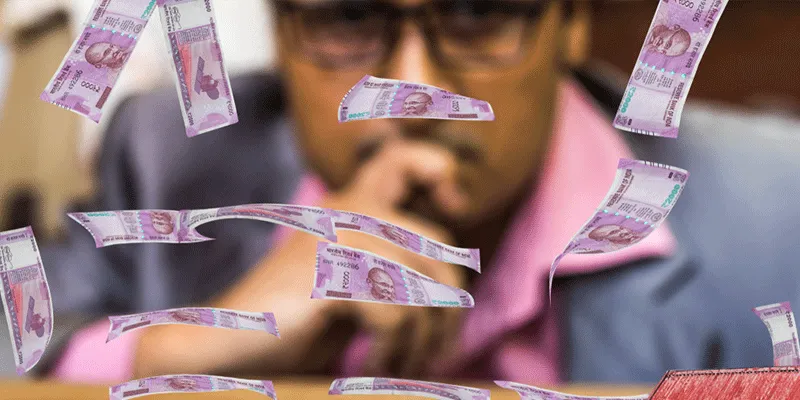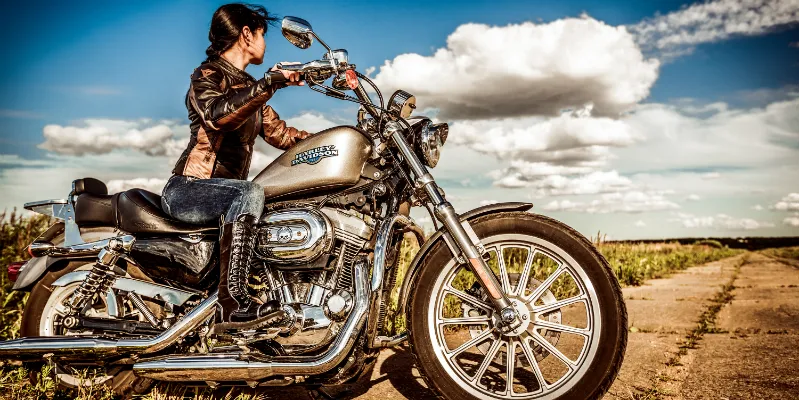We have covered five building blocks of the business model. Today, we will talk of the sixth – perhaps the one that is absolutely the foundation of your business – monetisation.
What does monetisation mean? Very simply put, it is the way in which you can make your business make money. I always say this, there are ten building blocks of your business model, but if you crack what is my product, who is my customer, what is my value proposition to my customer and how will I make money, you’ve cracked the code of building a sustainable and profitable business. The rest of the building blocks are just a matter of housekeeping.
Making money from a business in many cultures is frowned upon - and such cultures should be frowned upon. In India too, profit is a dirty word and there are extremely negative emotions and traits associated with a successful business. Let us be very clear.

Monetisation refers to revenue, not profit
If you don’t know or don’t want to make money from your business, you have no business to be in business.
Monetisation refers to revenue, not profit. But if there is no revenue, there is no profit! I have met all kinds of entrepreneurs in the last twelve years since I started mentoring. The ones who get my goat are those that say they don’t care if their business makes money or not! If you are a social entrepreneur, it’s alright to say I won’t take the profit out of the business, I will keep it reinvested, but saying I won’t make money is stupidity. Because if you don’t make money your dream dies.
In the brick-and-mortar companies, there was never any ambiguity about revenue streams. Because these businesses were capital intensive, the business plan very clearly identified various sources of generating revenue. Typically, it was from sales of the main product, from selling parts, and from after sales service.
The Internet companies however assumed that since they were asset light, revenue generation was not a priority at all.
It never fails to appal us when young entrepreneurs pitch their plans without a clear monetisation model. It also bugs the hell out of us when they present plans with a half-baked revenue stream. If start-up mortality is 90% in the first year of operation, it is because of two reasons and two reasons only.
One is that they have been shoddy in their customer discovery and profiling. The second - they have not identified discernible and multiple sources of revenue!
A good business model is one which has identified at least five sources of revenue. Yes, there will always be one or two main pillars. But depending on just one stream to encash the opportunity is a lousy strategy. The more the streams, the better your risk mitigation.
Now let’s understand a brand’s strategy to identify multiple ways to monetise by studying the case of Harley Davidson. And as always, we will do this within the Buddhist framework.
One Harley. Two Davidson brothers. The year 1903. One small shed in Milwaukee, Wisconsin. All of this is equal to one iconic American brand called Harley Davidson. The American military was their first and major customer. Over the next fifty years, the brand outgrew the motorbike business and built a cult genre of an outlaw/ rebel/ego business! And it didn’t do this by just making and selling bikes!
Come on, let’s go on an H-D trip!
What was the pain point H-D addressed?

The Harley Davidson motorbike created a new species of human beings
A bike was seen just as a means of transport from point A to point B. It didn’t matter what the product was, what the technology was, why someone bought one bike as opposed to another. There was no emotional connect with the customer beyond the utilitarian value that it made the customer mobile.
That was H-D’s sweet spot. It built on the angst of middle-aged white men who somehow felt short-changed by authority. Harley became their vehicle to show finger at people in positions of power who told them what to do, their wives, their bosses, and even their peers.
And so the Harley men said, we make our own roads, we make our own rules, we make our own destinations. Up yours!
Thus the Harley customers were always a community - and their disrespect for authority was not an individual act of defiance. It was collective finger-showing which was both their armour and their anthem.
What was the origin or source of pain?
We’d like to believe (believe it or not) that not too many people had read Freud and that was the source of their pain! Post-World War II, big fuel-guzzling cars were seen as status symbols. Never mind that the three biggies of the automobile industry chose to feed this frenzy by ignoring a few feeble voices that clamoured for smaller and more fuel-efficient cars. Till an unknown upstart company called Toyota appeared on the scene and was all ears!
Two wheelers were at the bottom of this pecking order and people hadn’t yet internalised Freud to understand that the two wheeler created more penis-envy than the biggest and the snazziest four wheeler!
How did Harley put an end to this pain?
We said Harley was in the ego business, right? So the motorbike was the mother node around which the entire satellite system of cult creation was built. Gears, apparel, tattoos, fan club, events, counter-culture, artefacts, ancillary industries… H-D didn’t just make a bike. It made a new human species. A Harley biker wasn’t just a rider. Like Amitabh Bachchan’s boast that wherever he stood, the queue would form right behind him, wherever the Harley biker rode, the sun came up on the horizon!
And Harley used this emotional fulcrum to create multiple, imaginative, profitable, endearing, even aggressive, sources of revenue. It’s a phenomenal strategy that made more and more money on encouraging its members to embark on the long, rough, dusty road to rebellion.
What did Harley do to avoid pain?
It made more bikes. It made outlaw more cool than Louis L’amour. It encouraged more bikers to become Harley bikers. It created a cult following that became a groundswell. It didn’t just disrupt behaviour.
It made disruptive behaviour de rigeur to become a Harley biker. And it milked money from every act of defiance and disruption!
Now let’s understand what and how Harley did within the eight guiding posts of the Buddhist doctrine.
H-D owners think of themselves as a community of equals. Status does not matter. Neither do their jobs, incomes – nor the power of the motorcycle rider next to them.
All that matters is the empowerment they have through a common goal of community and a common passion of riding motorcycles.
Attitude, individualism or rebellion never had it righter in thinking!
“We are committed to motor-cycling,” said Harley’s former Chairman once. “It’s not hardware, it is a lifestyle, an emotional attachment…” It is an attachment that pervades the hearts and minds of H-D’s employees, customers and dealers. Harley’s customer intimacy is also the success story of a management team that stays uniquely close to their customer base.
Their senior executive team goes to the Four Corners event to spend more than a week riding with their customers, celebrating the product.
This is the right man-machine value that has transcended all socio-economic barriers.
An acknowledgment by their former chief ranks as the right speech in their terrific turnaround in the 80s. "We realized the problem was us, not them," he said, after years of heaping the blame on the Japanese for their slump.
Once this truth was acknowledged, Harley went on a complete quality-driven make-over – and even leveraged the Japanese’s best practices in production methods – such as just-in-time inventory control and quality circles.
How did H-D transform the negative connotation of being called ‘hogs’ into a positive one? What was the right action they adopted to shed the image of a roaring and nasty drug gang called Hells Angels that zoomed around only on H-D bikes?
They created a pride of belonging to H.O.G (the famous Harley Owners Group), under which banner, they continue to extensively ride for charity.
H-D’s move to create a sense of belonging extended into building a re-invented brand. The Harley-Davidson Motorclothes, launched in 1986, creatively removed the not so positive black-cladded legion image. Shirts with collars, denim blue jeans, baby clothes and bright-coloured women’s fashion garments – and lo behold, a community of accessory suppliers emerged.
H-D also helped their dealers re-model and upscale their stores to showcase this merchandise. The Harley-Davidson University also offers relevant management programs to upskill them in running their business.
Right livelihood, right?
Harley’s relationship with their dealers, through their most difficult years, is an object lesson of right diligence. Most of their extensive network of dealers have been with Harley for decades, and many dealerships have been passed through family generations (in fact one family traced it back to 1914!) in their quarterly meetings!
Their dealer advisory council holds quarterly meetings, and in their annual dealer meeting, new models are previewed and issues addressed. Little wonder the dealers stuck be them through their war years and helped H-D fix quality problems without charging the company back.
H-D’s handling of their back-logged demand-supply gap shows the right mindfulness of their customers’ engagement. ‘Ride Free’, their marketing campaign aims to upgrade customers to more expensive models with an unbelievably attractive trade-in of their current bikes. And they refurbish them with innovative and personalized kits to set up a booming market of used Harleys that delight their waiting ‘first time’ customers. In fact, owners have sold their machines for more than what they originally paid!
Of course, news reports and opinions on H-D’s aging customer base continue to make the rounds. The company seems to have struck the right balance - between being cognizant of such views and focusing on its core strengths of quality and individualism. Harley’s website has categories for women riders.
Workshops and fashion shows are held to bring women up- -close and personal into the Harley world. And if the proof of the pudding is in the eating, Harley has consistently bagged the number one slot in the new highway motorcycles in the U.S for the 18-34 age group.
"We continue to sell more Harley-Davidson motorcycles to today's young adults than we sold to Baby Boomers when they were young adults." Harley CEO’s assertion clearly vindicates their right concentration.
So guys, rev into the fast lane of monetisation with these Buddhist tenets!







